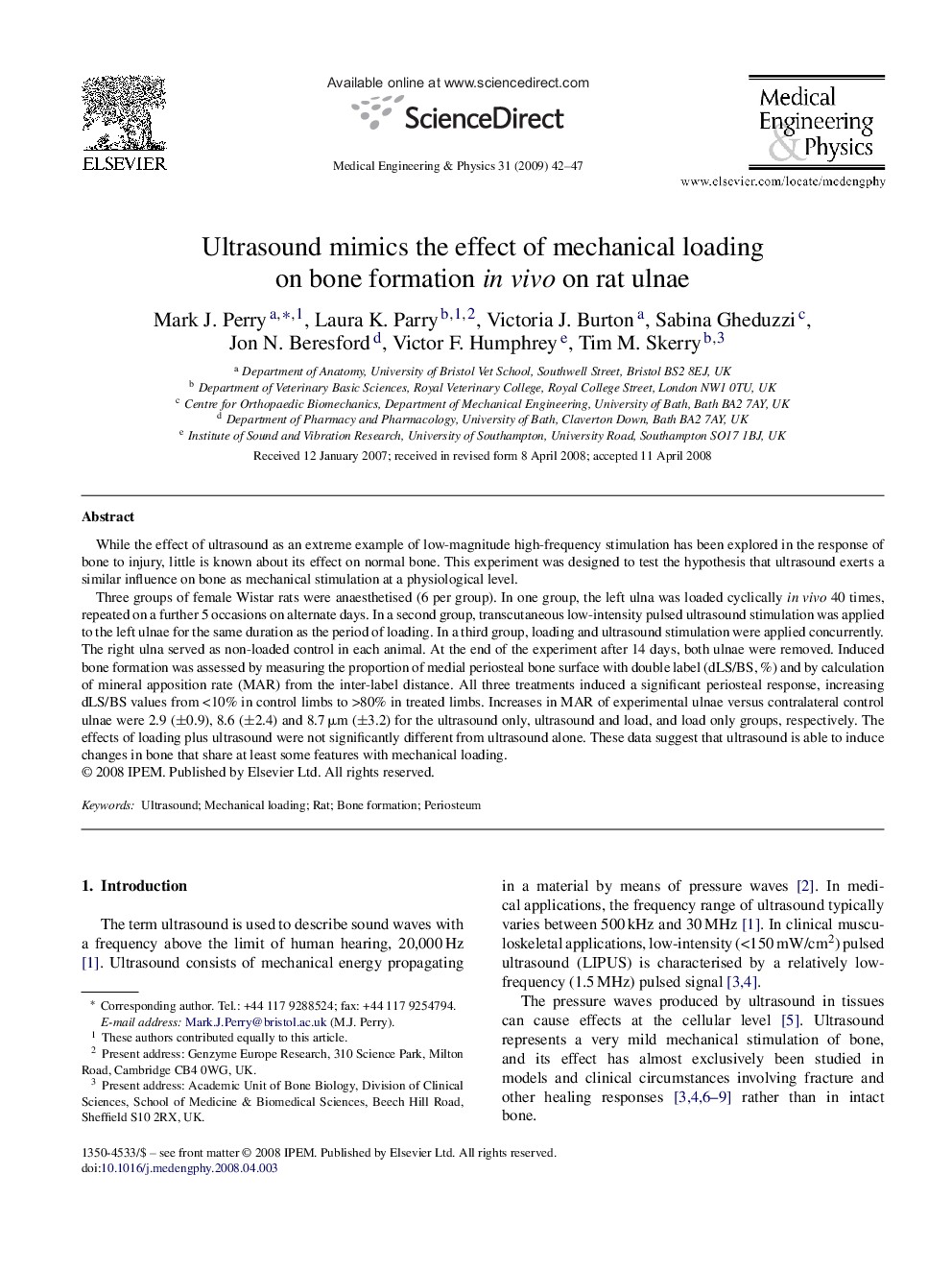| Article ID | Journal | Published Year | Pages | File Type |
|---|---|---|---|---|
| 876844 | Medical Engineering & Physics | 2009 | 6 Pages |
While the effect of ultrasound as an extreme example of low-magnitude high-frequency stimulation has been explored in the response of bone to injury, little is known about its effect on normal bone. This experiment was designed to test the hypothesis that ultrasound exerts a similar influence on bone as mechanical stimulation at a physiological level.Three groups of female Wistar rats were anaesthetised (6 per group). In one group, the left ulna was loaded cyclically in vivo 40 times, repeated on a further 5 occasions on alternate days. In a second group, transcutaneous low-intensity pulsed ultrasound stimulation was applied to the left ulnae for the same duration as the period of loading. In a third group, loading and ultrasound stimulation were applied concurrently. The right ulna served as non-loaded control in each animal. At the end of the experiment after 14 days, both ulnae were removed. Induced bone formation was assessed by measuring the proportion of medial periosteal bone surface with double label (dLS/BS, %) and by calculation of mineral apposition rate (MAR) from the inter-label distance. All three treatments induced a significant periosteal response, increasing dLS/BS values from <10% in control limbs to >80% in treated limbs. Increases in MAR of experimental ulnae versus contralateral control ulnae were 2.9 (±0.9), 8.6 (±2.4) and 8.7 μm (±3.2) for the ultrasound only, ultrasound and load, and load only groups, respectively. The effects of loading plus ultrasound were not significantly different from ultrasound alone. These data suggest that ultrasound is able to induce changes in bone that share at least some features with mechanical loading.
